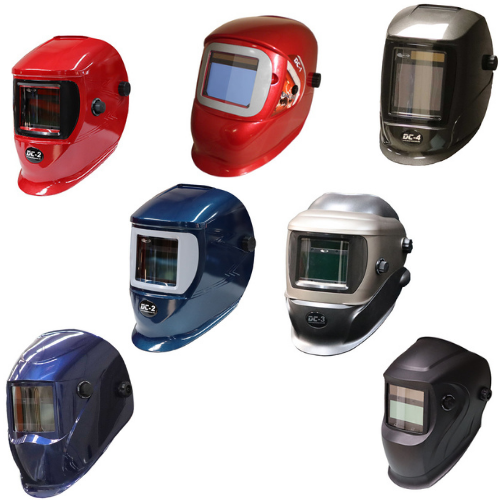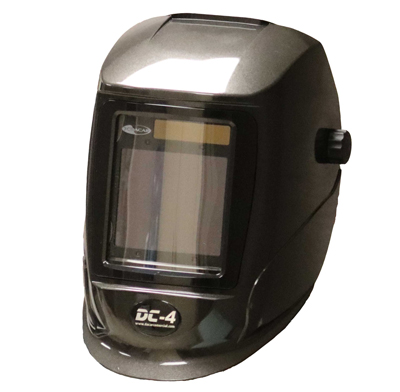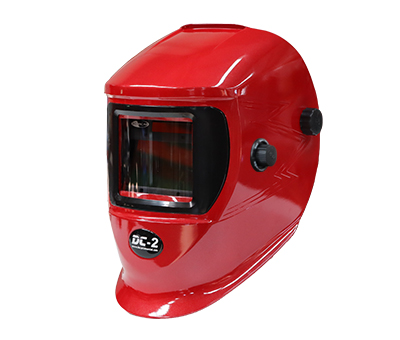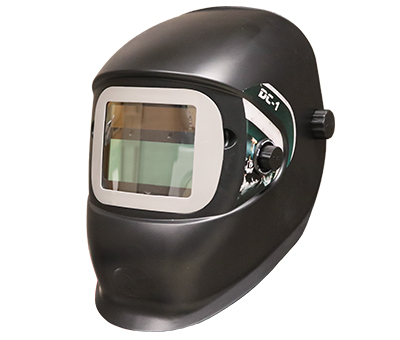Working without protection for our eyes and face can cause great risks to our health, especially loss of vision and serious eye injuries. For this reason, it is essential to have a good welding helmet that guarantees maximum protection and can prevent the harmful rays produced during the welding process from affecting the eyes or causing burns to the face.
The best electronic welding helmet is the one that best adapts to the type of work we are going to carry out, taking into account factors such as weight, the quality and performance of the automatic filter, the level of protection and facial coverage offered by the screen and, of course, the quality-price ratio and the availability of spare parts and consumables.
In relation to weight and facial coverage, at Dacar we are manufacturers of very light masks (from 330gr) that offer great facial coverage in all senses, even covering the ears to prevent projections from entering.
Regarding the quality of the automatic eyepieces, the eyepieces of the mid-range masks are certified as 1/1/1/2 and incorporate “True Color” technology to be able to distinguish colours and textures during the welding process.
These filters have fields of view from 100×41 to 100×53 and are equipped with 2 or 4 independent arc sensors depending on the model.
The high-end filters are 1/1/1/1 certified and are all equipped with 4 independent arc sensors, “True Color” technology and fields of view from 100×60 to 100×90. In addition, they all have access to the filter battery so that it can be replaced when it reaches the end of its service life.
What is the purpose of the automatic welding helmet?
The automatic filter in the welding helmet allows the user to look through when not welding to see where to place the torch, electrode, etc. and start working without having to remove the helmet, as the filter automatically darkens as soon as it detects the welding arc.
With inactinic dark glass helmets, the welder is obliged to look outside the helmet where he has to put the torch. It is common to start welding without the helmet in front of the eyes to confirm that the spot is correct and then quickly put on the helmet and continue with the process. This is where there is a risk of harmful welding rays affecting the eye as there is no filter between the arc and the retina, which can cause very serious injuries both in the short and long term.
We must buy the screen that best suits our needs and our economic situation.
At Dacar we give you good advice to recommend you the helmet that best suits your needs (interior or exterior adjustment, attached to a work helmet, with a folding window, special for TIG or low amperage welding…).
Here is an example of a real situation that we frequently encounter:
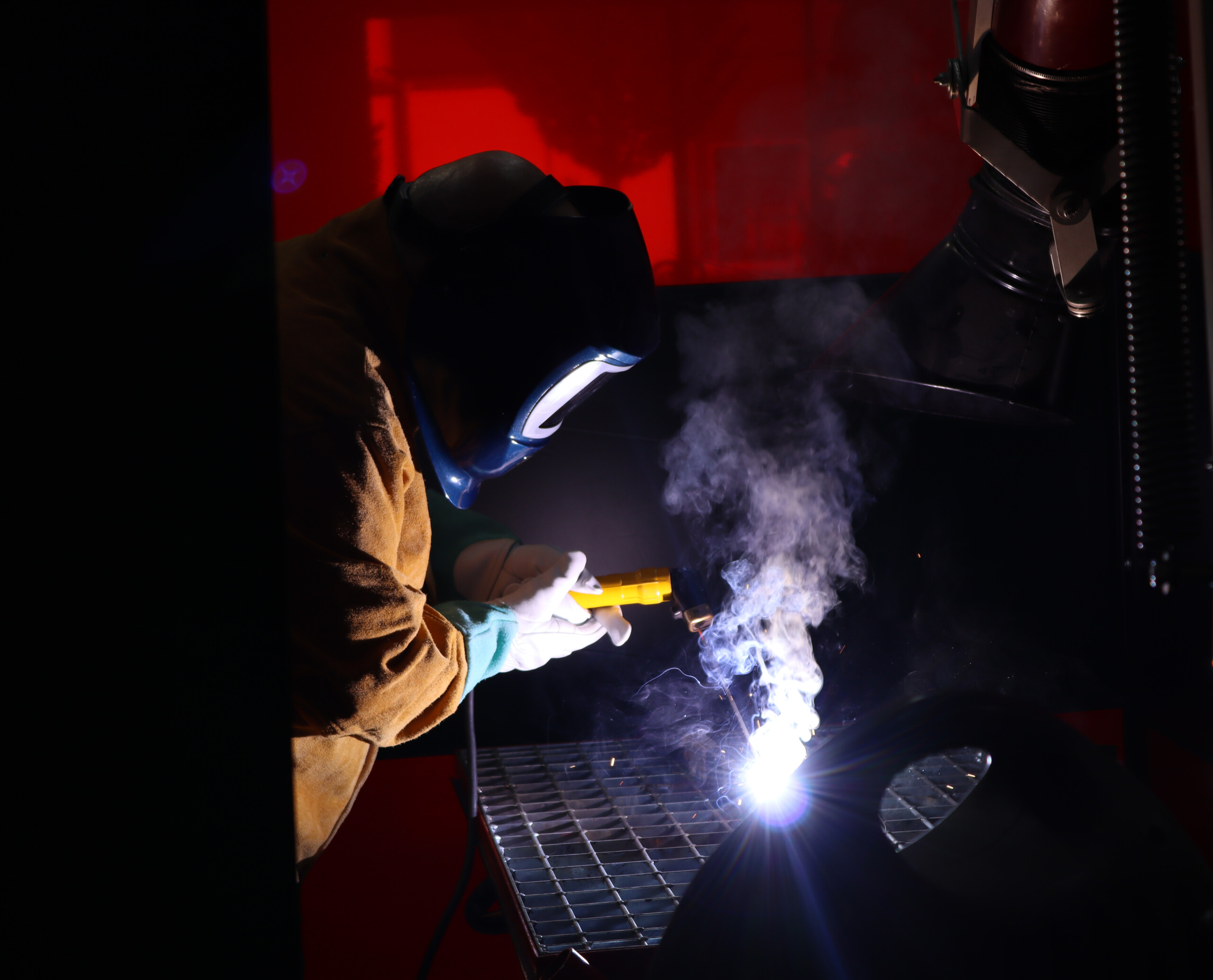
A private individual who goes to an industrial supply or hardware store and asks for a welding helmet for home repairs.
Bad advice would be to recommend the cheapest welding helmet to that person.
Good advice would be to recommend to that person a helmet with “GRIND mode” and battery access. GRIND reduces sensor functions and extends battery life. If it can also be accessed when the battery runs out, the customer will have a mask for a long time and will be satisfied with the purchase, with the establishment and with the brand.
Let me explain why. This type of user uses the mask for a short period of time and then stores the mask in a cupboard or in the original box. The problem is that the arc sensors are continuously looking for light, that is their function. And for this they use the energy of the filter battery. As they are always in the dark inside the box and/or the cabinet, they wear down the battery until it runs out and the mask stops working.
If the mask does not have access to the battery, the filter would have to be discarded and a new one put in, causing the customer to be angry because he has only used it once in months and now it no longer works. This customer will probably not return to the establishment as he feels cheated and, above all, badly advised.
All the masks manufactured by Dacar are for professional use, but logically not all of them are suitable for everything.
For this reason we take care to know in detail the needs of our customers in order to advise them correctly and offer them the model that best suits them.
What type of welding is performed (spot, tig, etc…), if it needs a work helmet, folding window for deburring, etc…
The best welding helmets that are also suitable for any welding process are:
- The DC-4 welding helmet. With 98×87 field of vision, 1/1/1/1 certification, “True Color”, variable DIN 4-13 tone, GRIND function, internal regulation, replaceable battery and DRM harness to increase the support surface on the head and improve the welder’s comfort while working.
- The DC-2 SL513G welding helmet. With 100×62 field of vision, 1/1/1/1 certification, “True Colour”, variable shade from DIN4 to DIN14 (all others on the market stay at DIN13), replaceable battery and GRIND button on the outside. The DIN14 is recommended for very high amperage welding and for welders with light eyes who are more sensitive to light.
- Our DC-1 SL513G welding helmet is especially recommended for TIG welding due to its low weight and high performance.
There is a range of less expensive helmets also used by professional welders. We make every effort to ensure that our products are always of good quality, although not all of them have the same performance. Our aim is that the welder can carry out his work safely and comfortably by choosing the helmet that best suits his needs.
In this economic range, commercially known as “El Paso”, we find filters with DIN9-13 variable regulation, with 2 sensors, True Colour and interior or exterior regulation.
Continuing with the previous example, I would like to mention the DC-1 or DC2 with ELPV913EP filter, which, although belonging to the economic or medium range, does have access to the battery to be able to replace it.
This makes it an excellent choice for those who are not looking for a high priced helmet, but who are looking for a helmet that can last for a long time. Whether they use it every day or just occasionally.
In addition to protecting the face and eyes of welders, we must also protect their respiratory tract.
According to a recent study by the British HSE, the most advanced body in Europe in terms of occupational health and safety, the protection that welders should wear to protect their respiratory tract should be at least an FFP3.
Disposable FFP3 masks are available as well as half masks with interchangeable P3 filters. Although the filtration level of both solutions is the same, we must not forget that the facial sealing and therefore the efficiency in the protection of the respiratory tract is superior in half masks.
Air circulates where it encounters the least resistance and the better the face seal, the more unfiltered air we will breathe. None of the solutions mentioned above are entirely effective. The best way to protect the welder today is with a motorised Dacar unit.
Let’s look at the whole thing in parts:
Powered air purifying respirator: The powered air purifying respirator is attached to the worker’s waist and is powered by a rechargeable battery. This device incorporates filters that filter particles or particles + gases. The air passes through the filters, is cleaned and reaches the mask through a tube. The motor expels more air than necessary for breathing in order to create overpressure or positive pressure in the worker’s mask.
The mask: The mask incorporates a fireproof facial seal that seeks to create an air chamber and expel the excess air that the motor generates outwards. In this way, the worker only breathes filtered air, and the excess air is expelled to the outside, creating an air shield that prevents any particles from entering the mask or the worker’s respiratory tract.
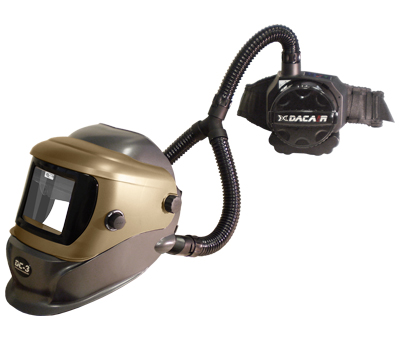

In addition to having a wide range of combinations to suit all jobs, Dacar powered equipment is certified as TH2 or TH3 according to EN12941. A TH3 certified unit offers a level of protection 10 times higher than that of a FFP3 mask or half mask with P3 filters.
We must not forget the extra comfort component offered by powered assemblies. In addition to providing the most effective protection possible for the welder, the air flow emitted by the motor greatly relieves the high temperatures in which a welder usually works, especially in summer.


